|
Paleo News Room
for the site discovered by Chris (Comeswithclouds) White in 2010 Topics
All
History
August 2020
|
|
0 Comments
|
Paleo News Room
for the site discovered by Chris (Comeswithclouds) White in 2010 Topics
All
History
August 2020
|
|
Native American Church of Virginia the Sanctuary on the Trail™
Our Vision To Reduce Suffering in the World Our Mission Helping Leaders First and Acknowledge Indigenous Contributions to the World |
